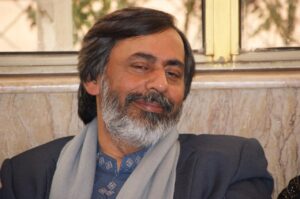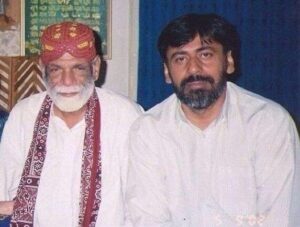Renewed hope for beautiful life
Introduction
Life, with its myriad challenges and triumphs, can sometimes lead us down a path of despair and emotional turmoil. In this article, we will embark on a journey to rediscover the beauty in life—understanding the significance of hope, exploring potential causes of emotional distress, discussing management strategies, and introducing an unconventional approach known as the “Ultimate Remedy.” This unique audio therapy claims to complement traditional methods by harnessing the power of sound and intention to promote healing and alleviate conditions like depression.
Understanding the Essence of Hope
The Power of Hope
Hope is a fundamental human emotion that drives us to seek a better future. It is the belief that positive outcomes are possible, even in the face of adversity.
Causes of Emotional Distress
Life’s challenges and various factors can erode our sense of hope and lead to emotional distress:
-
Loss and Grief: The loss of a loved one, a job, or a cherished dream can trigger deep emotional pain.
-
Stress and Anxiety: Persistent stress and anxiety can overshadow hope and joy.
-
Trauma: Past traumatic experiences can leave lasting emotional scars.
-
Negative Thought Patterns: Habitual negative thinking can contribute to emotional distress.
-
Health Issues: Physical and mental health challenges can impact emotional well-being.
Management Strategies for a Beautiful Life
Nurturing hope and rediscovering the beauty in life requires a holistic approach:
Cultivating Hope:
-
Mindfulness and Gratitude: Practice mindfulness and gratitude to appreciate life’s simple joys.
-
Positive Relationships: Foster supportive and positive relationships that uplift your spirit.
-
Goal Setting: Set achievable goals that give you a sense of purpose and direction.
Managing Emotional Distress:
-
Self-Care: Prioritize self-care practices, including exercise, proper nutrition, and adequate sleep.
-
Therapy and Counseling: Seek professional help to address unresolved emotions, trauma, or mental health issues.
-
Mind-Body Techniques: Explore mind-body practices such as meditation and yoga to reduce stress.
The “Ultimate Remedy” An Alternative Approach
The “Ultimate Remedy” introduces an unconventional approach to complement traditional methods for restoring hope and embracing the beauty in life. This unique audio therapy claims to promote healing through the power of sound and intention.
How to Use the “Ultimate Remedy” for a Beautiful Life
If you decide to explore the “Ultimate Remedy” as a complementary tool for renewing hope and finding beauty in life, follow these steps:
-
Download the Audio: Visit the designated website and download the “Ultimate Remedy” audio from the provided links.
-
Follow Instructions: Pay close attention to the instructions on how to use the audio. Specifics of its usage are not detailed in this article, so it’s crucial to fully understand the recommended process.
-
Contact for Help: For any questions or assistance, you are encouraged to reach out to “help@mastmasthealers.com.”
Happy Patients
Years since day one
%
Satisfaction
Testimonial
How to Listen to the Ultimate Remedy:
Download the Ultimate Remedy audio from our website or app. It’s free and accessible to all.
- Choose a quiet, comfortable space where you won’t be disturbed.
- Close your eyes and visualize yourself in the presence of your higher power or the essence of the universe.
- Listen to the audio with great concentration and closed eyes.
- After the audio is finished, open your eyes and take half a glass of water.
- Close your eyes again and say “your name” or a word that represents your belief (such as “God”, “Universe”, or “Love”) three times in your heart.
- Drink the water with closed eyes in three sips.
- For optimal results, it’s recommended to listen to the Ultimate Remedy three times a day (morning, evening, and before sleeping) for seven consecutive days.
About the Creator – Syed Safdar Hussain Bukhari
Introduction and Early Life
Syed Safdar Hussain Bukhari, also known as Kakian Wali Sarkar, was a unique example of kindness, devotion, and tenacity. Born on May 6th, 1940, he dedicated his life to serving humanity and providing relief to those suffering from various ailments.

Social Work and Spiritual Journey
Between 1960-1980, he engaged in social work by undertaking road repairs, establishing schools, and arranging medical supplies in Lilla Town. In 1990, he left his ancestral home and family wealth to move to Lahore, where he comforted the depressed and saddened through mystic dance and music.
The Ultimate Remedy
In 1998, Baba Bukhari’s research led to the discovery of “The Ultimate Remedy,” a blessed audio that he believed could cure physical, psychological, spiritual, and supernatural problems. The remedy involved listening to the audio three times a day for seven consecutive days, followed by a specific water ritual. This method claimed to cure various ailments, including coronavirus, AIDS, cancer, drug addiction, worldly problems, and psychological issues.
Legacy and Death
Baba Bukhari’s research and unconditional love left a lasting impact on humanity, providing positive thinking, peace of mind, health, fearless life, and an example of love and compassion. He passed away on February 8th, 2005, leaving behind a legacy of healing through “The Ultimate Remedy.”

His spiritual successor is Syed Baba Jaan
According to Baba Bukhari (RA), his spiritual successor is Mr. Shakir Uzair, also known as Syed Baba Jaan . As the chosen heir to Baba Bukhari’s spiritual legacy, Syed Baba Jaan carries forward the teachings and practices that have been passed down through generations. Dedicated to serving humanity and promoting healing, Mr. Shakir Uzair continues to spread the message of love, compassion, and the transformative power of the Ultimate Remedy to help countless individuals in their journey towards holistic wellness and personal growth.

